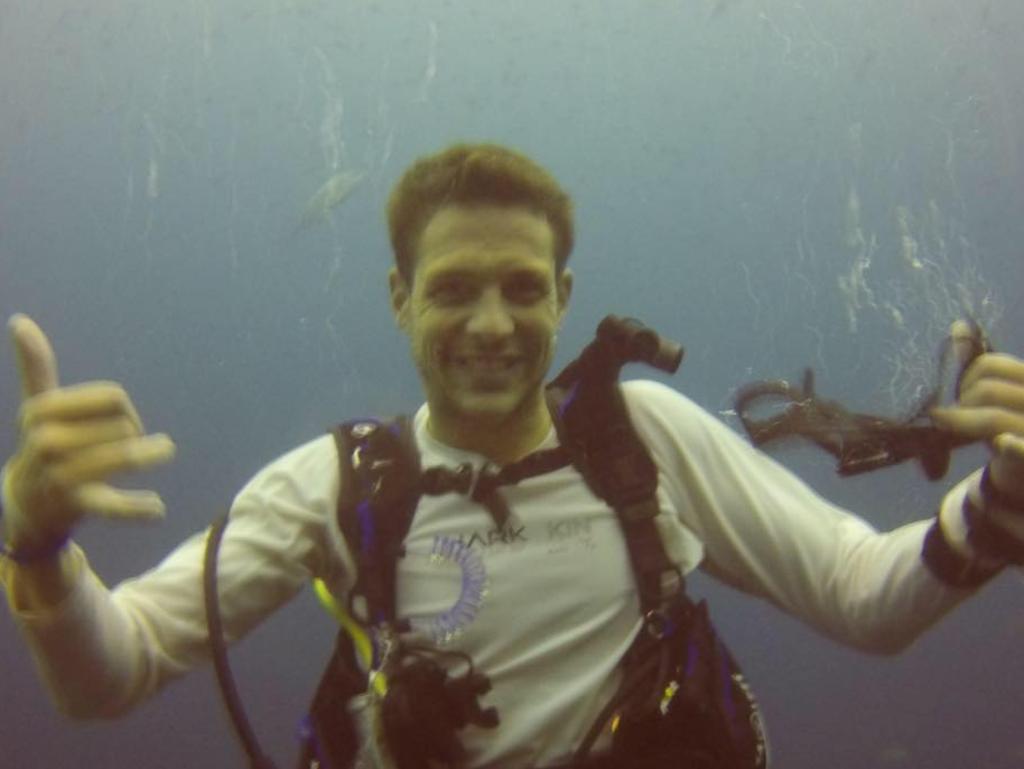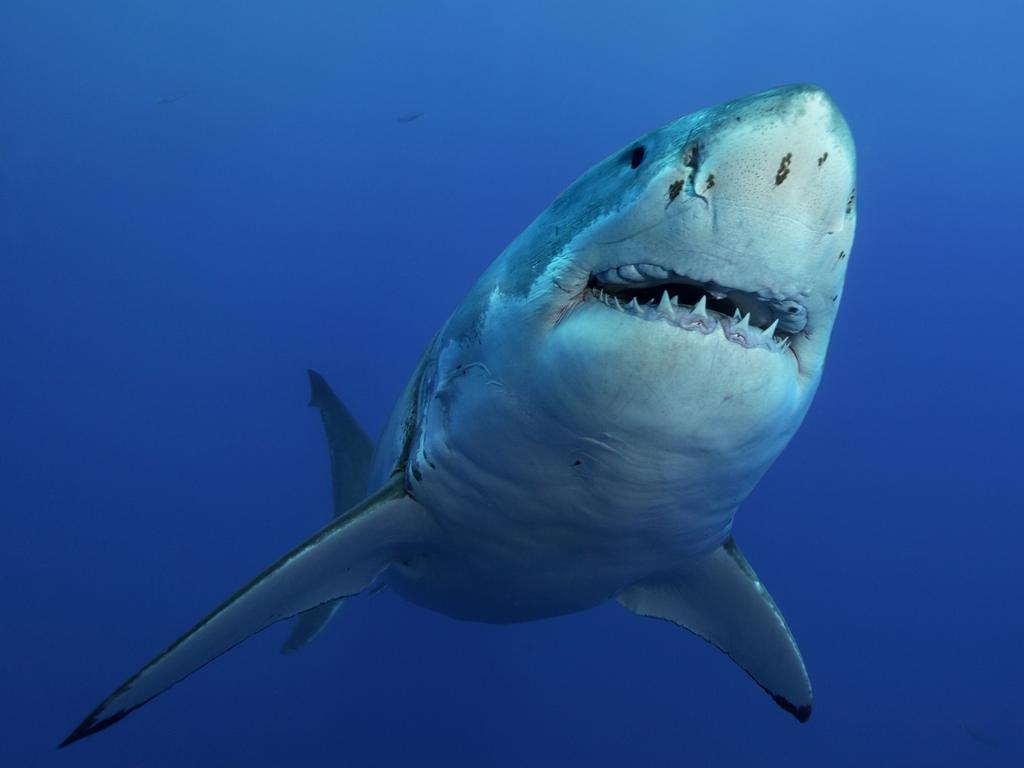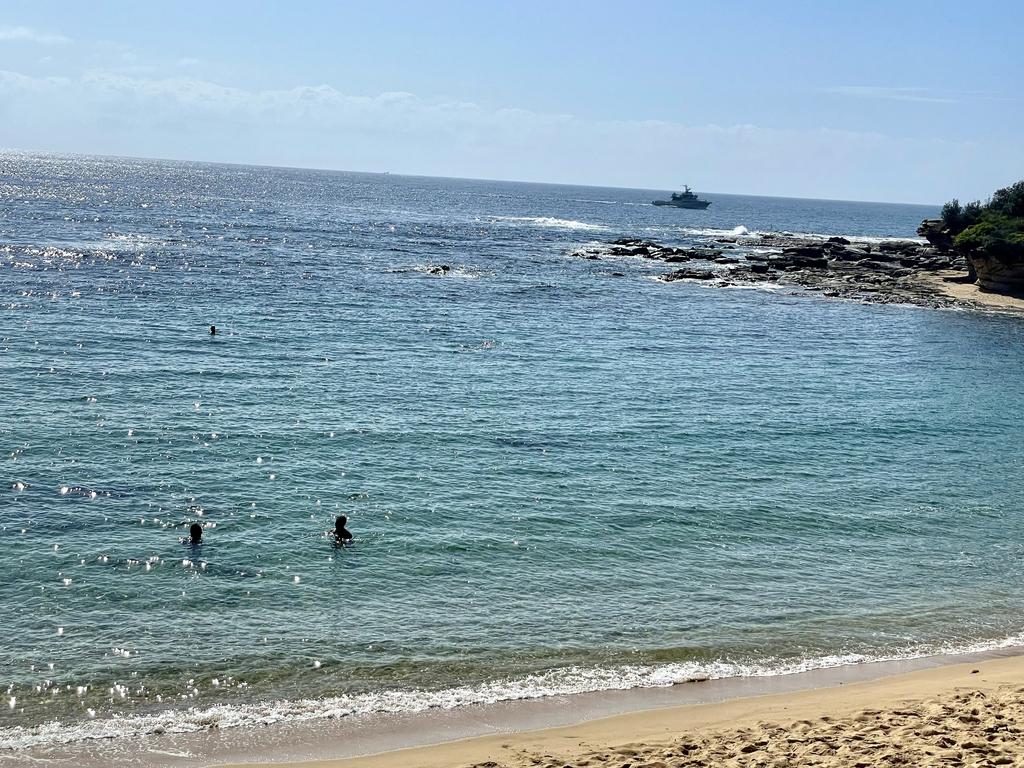Great white sharks protected in NSW since 1996 and attacks are now on the rise
After 26 years of protection in NSW waters — which helped see great white shark numbers increase — the state government declined to outline its plans to manage their numbers in the wake of this week’s fatal shark attack.
Just how many great white sharks will satisfy state government conservation plans is apparently a figure politicians do not want revealed.
After 26 years of protection in NSW state waters, which has helped see great white shark numbers increase according to fishers and surfers, the state government on Friday declined to outline any “end game” to manage their numbers.
It refused to answer a simple question of if there is a figure which would keep a healthy population of the predators but also reduce the incidence of fatal shark attacks, which have been rising – the latest, the horrific attack on Simon Nellist as he ocean swam near Little Bay on Wednesday.
A CSIRO report in 2018 suggested there could be as many as 12,800 great whites off the nation’s east coast. More than 700 sharks have been tagged by the state government. Scientists argue great white numbers have “stabilised”.

Politicians and department bureaucrats have failed to make any major change to shark population policy since 1996 when great whites won much needed listing as endangered, and became protected, in NSW.
The only change to how authorities deal with great whites in that time has been repeated investments in protection of swimmers, surfers and divers through “smart” drumlines and fleets of drones.
There was no answer on Friday to the question of whether the ambition of the protection is for great white numbers to return to pre-colonial times, or what population is needed before they would no longer be considered and endangered species. The Department of Primary Industries (DPI) initially offered a scientist to interview on Friday before declining and instead sending a statement.
Environment Minister James Griffin also declined to comment. His office said the issue of shark management was a question for local councils.
In the wake of 35-year-old Mr Nellist’s death and partial consumption by a great white shark possibly more than four metres long – the first fatal shark attack in Sydney in almost 60 years – experts have continued to call for great whites to be protected.
“These protections for sharks in Australian waters are only ever a good thing,” Macquarie University marine biology researcher Professor Vanessa Pirotta said.
“These animals were hunted to the brink of extinction and look at whales now, since they were protected they have bounced back quite a bit too. We’re all thinking they’re all four metres plus but the reality is they are not, we don’t interact with sharks like this one every day.”

Mr Nellist’s death has reignited debate about juggling human protection with conservation. Shark attack survivor Dave Pearson does not want to enter a shark numbers debate.
He has his own views after having suffered severe arm injuries when bitten by a bull shark off Crowdy Head on the North Coast in 2011, but he says he doesn’t need “the grief that comes” with wading into the debate.
But Mr Pearson, who set up shark attack survivor support group Bite Club, will say that shark attacks are not as rare as many claim. “They do happen more regularly than people say,” he said. “(In) 2020, there were 26 attacks and eight were fatal and people still quote only one person a year dies of a shark attack, but in 2020, eight dead, in 2021, at least three dead, so the one a year conversation is well and truly outdated. I think we were really lucky last year, not happy three people died, but I expected it to be worse.”
Bite Club is working with the DPI to hold community shark education events.
Got a news tip? Email weekendtele@news.com.au
COMMENT
Mal Holland
Truth and transparency is having a negative encounter with sharks.
The horrific shark attack on Simon Nellist should open a sensible debate about the danger of a rising population of great white sharks, an increase in the size of great white sharks in NSW, the nature of attacks, and the attitude of many scientists, and the government.
Great whites have been protected in NSW since 1996. In those almost three decades their numbers have steadily risen. Soon enough the “class of 96”, and those born afterwards will become adults, joining the big adult sharks already swimming off our beaches.
Adult great whites switch from a juvenile diet of mainly fish to preying on marine mammals – seals and whales and dolphins – when they reach about 3m to 3.5m long. While whales are prime food source for adults offshore, the conservation of seals in particular means there are now far more of them in NSW to draw big mature sharks right to the shoreline where we play in the water.

A surfer, ocean swimmer or diver in black wetsuit looks awfully like a seal to a big shark.
These adults, by their size and experience, attack their prey with far more power and sustained ferocity than juveniles. When that attack is on a human, it is devastating.
These big sharks are far more likely to actually consume their victim. The video of Mr Nellist being mauled by a big great white believed to be at least three metres long and possibly over four metres long, reveals a sustained, ferocious attack involving more than one bite.
The great white “one bite oops I made a mistake” narrative is pushed hard by shark conservation advocates. It is a disservice to reality.
Every single one of the recent fatal attacks in NSW on surfers, and the death of a surfer just across the border on the Gold Coast has been from sustained, multiple bite attacks. And these attacks were by sharks just below three metres long.
Yet on Thursday a shark expert was again explaining how attacks involving more than one bite were “exceptionally rare”.

MORE:
Every shark attack in recorded NSW history
Greens slammed over playing down fatality
This description of attacks is championed by scientists and academics who have crossed the line between research and advocacy. It was one of the reasons behind their push to have attacks described officially as “incidents’ ‘, “encounters” or “negative encounters”
Surfers and fishers have been saying for years that great whites have radically increased off the NSW coast, yet their “anecdotal” evidence was given short shrift by academia. The observations of people in the water seems to be of little value to them. After all they don’t come with a pie chart.
Scientists and the government have been conspicuously silent on the nature of the recent fatal attacks in NSW. It appears they do not trust people. It appears they fear our ignorance. We are heathens who will demand an eye for an eye, we are citizens of Amity Island, champing to row out with hunks of meat to catch the bloodthirsty beasts. Any of them, all of them, We want revenge.

We cannot be trusted to ask for a debate about great white sharks which just might accept that their increasing numbers and size are an increasing and significant threat, and that attacks are now often horrific.
We take a risk when we enter our glorious Pacific Ocean. That should be accepted. But we should also be openly talking about how and why the risk is increasing.
A good starting point in the debate is a simple question: How many great whites is enough? With abundant food, government protection, no predators of their own besides the odd orca, their numbers will keep growing, as will the numbers of big, mature sharks.
What is the end game?
Got a news tip? Email weekendtele@news.com.au
Originally published as Great white sharks protected in NSW since 1996 and attacks are now on the rise


